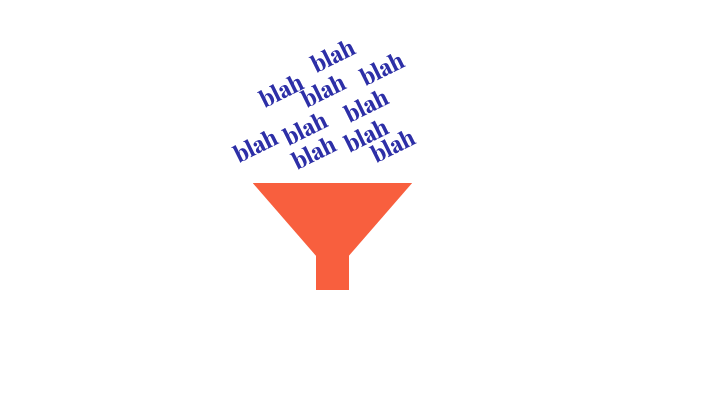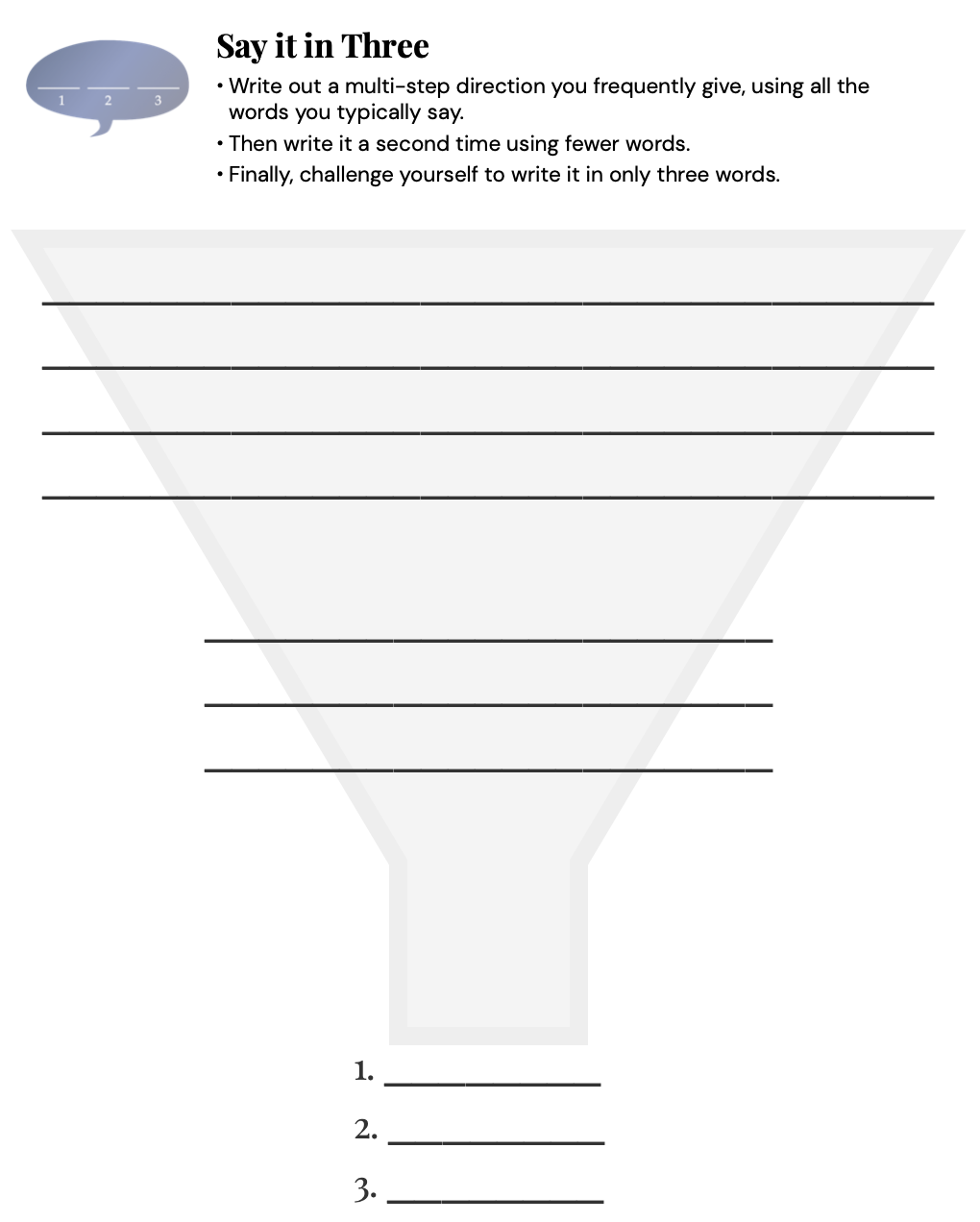Say it in Three — Simplifying Verbal Directions
We teachers like to talk! When we lead a lesson, support a student, and give class directions, we tend to use lots and lots of language.
Seriously. Lots of language.
Not-so-simplified Verbal Directions
The irony is, much of what we are saying in the classroom is not truly being heard! Due to language processing challenges, many students with ASD and ADHD—and others—cannot fully hear, process or completely understand all the verbal information we bombard them with.
Dr. Ken Rowe explains the problem of too much teacher language this way:
“There is too much information going through the students’ auditory gate. Either nothing goes through or what goes through is garbled.”
But everything we have to say is so important! How can we possibly reduce our verbal language?
Simplify Verbal Directions with “Say it in Three”
There are many ways to reduce the amount of language we use in the classroom. One way is to say it in three. Replace your long list of directions with a total of three words. Yes, just 3!
Try this: When giving directions, start by giving your long list of steps as you usually would. Then, repeat your directions, but slightly shorter. Finally, repeat your directions using only the three most important words. For example:
OK, class. Please hang up your coats and put away anything you had at lunch. Then get your writer’s notebook and meet the me at the rug.
(That’s you giving the full directions)
That’s: coats away, writer’s notebook, go to the rug.
(That’s slightly shorter)
Coats – notebook – rug
(That’s it! Three words!)
The Verbal Direction Funnel
Think about a funnel: our verbal rich directions get slowly more and more concise until we end by just giving a three-word direction.
Try it out! Look to see if your students follow directions more easily, more quickly, or more completely.
Need to practice?
Download a language funnel template below.
Write out a common direction and practice making it simpler and then… only in three words!
For more, check out: The Power of Our Words, a terrific book on classroom language from Responsive Classroom.
Original version published by Aaron on the Nest Egg blog at the ASD Nest Support Project




